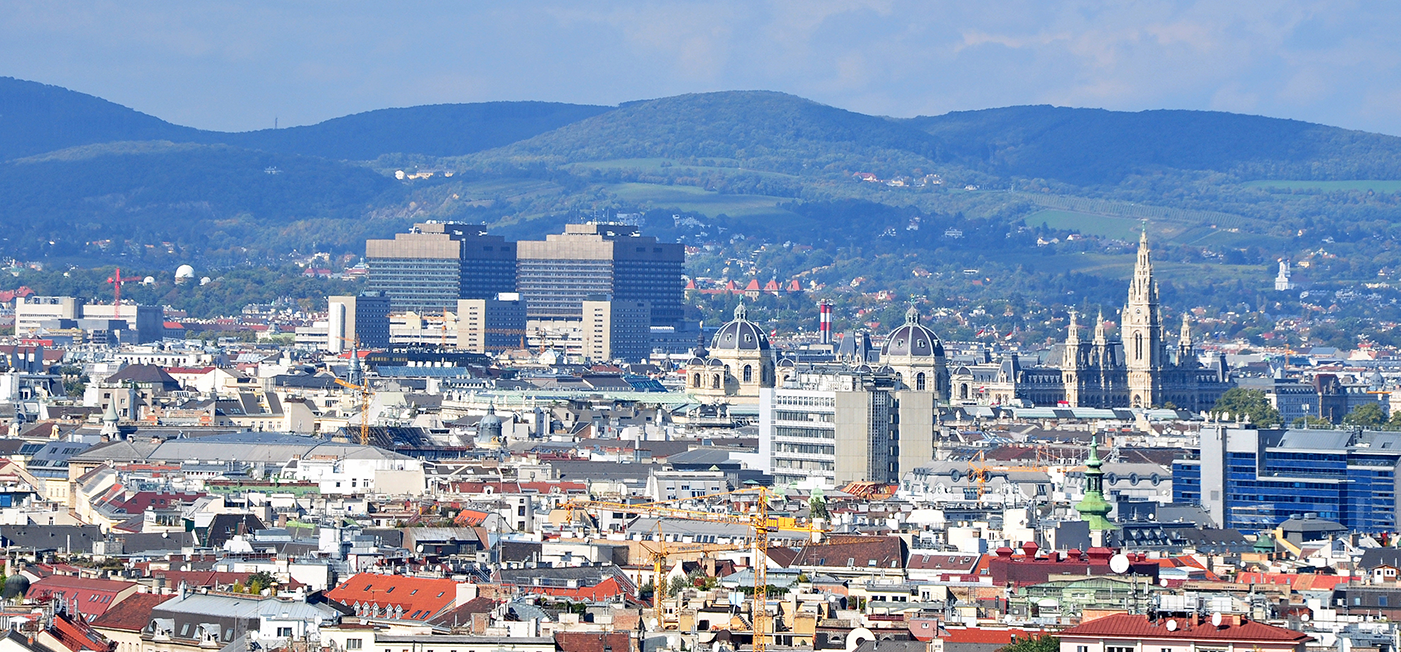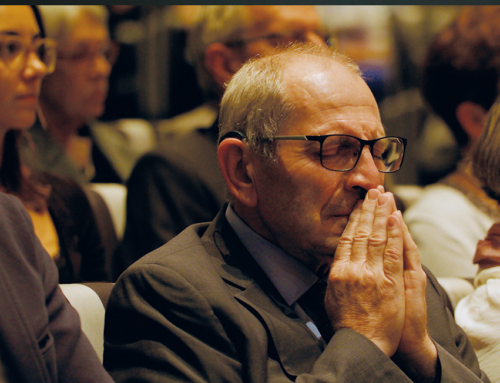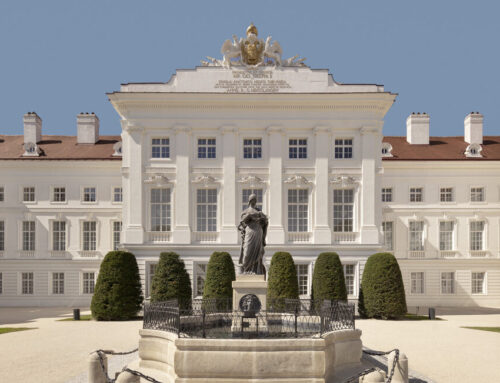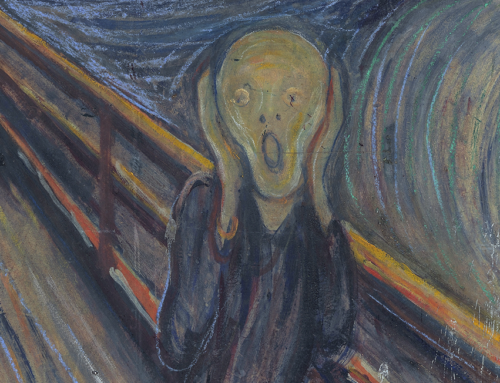From the First Viennese Medical School to Cochlear Implantation
Two significant medical schools, a psychoanalytical school, organ transplants and hearing implants were developed in Vienna, which have had a lasting impact on international medicine. A tour to medical sights in the inner districts of Vienna with guide MMag Christina Hieke-Kindlinger.
Eva Kohl

The Maria Theresa Monument between the Natural History Museum and the Art History Museum is a good starting point for Vienna tours, including a walk along the medical history of the federal capital. Impressed by the mighty statue of that Austrian empress who never was one - despite all her father's efforts, her husband Franz Stephan of Lorraine officially became Emperor of the Holy Roman Empire of the German Nation - the group of figures on the right, overlooking the Natural History Museum, is easily ignored. It is led by Gerard Freiherr van Swieten.
When Anne of Lorraine, regent of the Austrian Netherlands and sister of Maria Theresa, became ill with childbed fever, the physician van Swieten was called. Although he could not help, his methods impressed the Austrian monarch, who exchanged letters with him, so that she had him brought to Vienna as her own personal physician.
The First Viennese Medical School
In Vienna, van Swieten reformed medicine with his demand, "We must go to the patient's bedside and talk to them!" In this respect, van Swieten introduced anamnesis interviews and ward rounds in the broadest sense. Prior to that, the usual approach was a kind of remote diagnosis, which is frowned upon today for good reason.
Van Swieten recognized that in order to make an accurate diagnosis, it was important to take into account the living conditions and events just before the illness. However, the doctor also wanted to base medical treatment on scientific knowledge: He established a laboratory for medical research in the Academy of Sciences. This reform of medicine is called the First Viennese Medical School (in German: Erste or Ältere Wiener Medizinische Schule).
Medical care in Vienna
Across the Maria Theresa Monument we can enter the Vienna Hofburg through the Heroes' Gate, the residence of the regents of Austria at the time. In addition to the imperial family, the ladies-in-waiting and various servants with their families lived there: about 10,000 people in total. All of them were provided with an emergency medical service 24 hours a day, as well as free access to a pharmacy.
The public hospital (in German: das Bürgerspital) in front of the Kärntnertor took care of those citizens who could not take care of themselves. In addition to sick people, pregnant women and women in childbed, the hospital also took care of old or permanently disabled citizens as well as orphans and even pilgrims, whereby medical care only gained importance over time. The public hospital had to finance itself - in addition to donations, also from economic assets that either belonged to the hospital or were administered by it: two bathhouses, a mill, the only Viennese brewery and much more. The public hospital generated its largest income from the sale and serving of wine. It represented an important economic factor in Vienna and its surroundings.
In the inner courtyard of the Hofburg we find the monument of Francis II, Emperor of the Holy Roman Empire, who became Emperor Francis I of Austria in 1804. He married Maria-Theresa of Naples-Sicily as his second wife, who was his first cousin in two ways: from his father's side and from his mother's side.
Francis I/II was married a total of four times, but lost the first two wives in the course of childbirth; the other two wives never got pregnant. Pregnancy and childbirth were a health risk for Habsburg women; among "common people," female mortality in childbirth was even higher.
The Second Viennese Medical School
Ignaz Philipp Semmelweis, a Hungarian-born physician, attributed the frequent occurrence of puerperal fever to poor hygiene among physicians and hospital staff, especially in public hospitals. He tested his thesis from 1847 to 1848 with a study that is today considered the first application of medicine based on empirical evidence in Austria. He was thus both a student and the first popular representative of the Younger or Second Viennese Medical School (in German: Zweite Wiener Medizinische Schule or Jüngere Wiener), which subscribed to the scientific approach.
Semmelweis then demanded strict hygiene regulations from his students at the Vienna General Hospital. He was able to reduce mortality among women in childbirth from as high as 15 percent - at some hospitals it even reached 30 percent - to 1.27 percent. Nevertheless, his theses and demands made him unpopular with many colleagues.
After later living and working in Budapest, he died under unexplained circumstances in the Döbling Neurological Hospital, also known as the Landesirrenanstalt.
The legacy of the Habsburgs
The noble houses of Europe, in addition to the common diseases of the time, all suffered from hereditary diseases in this era. Among the Habsburgs, some Austrian monarchs quite unjustifiably earned the reputation of being imbeciles due to epilepsy: One could not explain epileptic seizures any other way. This was caused by the common marriage policy in Europe at the time. For example, Emperor Leopold I married the Spanish princess Margarita Teresa, who was also his niece and cousin. In six years of married life she bore him six children, but died shortly after the sixth childbirth at the age of 21.
Sigmund Freud, Psychoanalysis and ENT
We leave the Hofburg in the direction of the National Library, where there are also medical writings of the time. On the forecourt, the Josephinum is shown by a relief. Founded by Emperor Joseph II as a medical-surgical academy to train military physicians, the premises near Alsergrund, Vienna's 9th district, now house a medical history collection.
Neurophysiologist Dr. Sigmund Freud also lived and worked in the neighborhood. The premises at Berggasse 19 are now open to the public as a museum. Freud is not only considered the father of psychoanalysis, he also experimented with cocaine, which was unknown at the time. He recommended it as a painkiller and for substitution treatment against morphine addiction. Freud later discovered that cocaine could also be addictive.
Inspired by Freud, the ophthalmologist Karl Koller at the Vienna Eye Clinic at the AKH, the oldest eye clinic in the world, used the analgesic effect of cocaine as an anesthetic. Koller is subsequently regarded as the founder of modern local anesthesia, which is also used today in ENT surgery.
Vienna General Hospital - Centuries of Medical Excellence
The Großarmen- und Invalidenhaus, built under Emperor Leopold I in the area of the Altes AKH, now used for university and catering, was converted by Emperor Joseph II into the First General Hospital and opened in 1786. The Fool's Tower there, now the Pathological-Anatomical Collection, was the first special building to house the mentally ill. The Vienna General Hospital was the center of the Viennese Medical School, especially in the 19th century. In addition to Ignaz Semmelweis, the Nobel Prize winner Karl Landsteiner, for example, worked there on the discovery of blood groups, or the Nobel Prize winner Róbert Bárány, an ENT physician and neurootologist who researched the sense of balance.
In 1984, Ernst Wolner and Axel Laczkovics performed the first heart transplant in Vienna at AKH. As early as December 16, 1977, otologist Kurt Burian implanted the first multichannel cochlear implant at Vienna General Hospital, which had previously been developed by Ingeborg and Erwin Hochmair at the Vienna University of Technology and later led to the founding of the hearing implant manufacturer MED-EL. Similar to Semmelweis' demand for hygiene, the artificial replacement of the auditory organ - the only sensory organ that can be artificially restored to this day - led to fierce controversy; in the meantime, however, it has become equally established as an unerring aid for those affected and is now routine. In 1994, the relocation of the clinic to the New General Hospital (in German: Neues Allgemeines Krankenhaus; AKH) building complex was completed, where current services of top Viennese medicine are located.
Customized themed tours through Vienna
If you want to know
- how Baron van Swieten became the model for Dr. van Helsing in Dracula,
- whose wound was treated with an ant suture in the old Vienna,
- why knights often suffered whiplash,
- why the Austrian Elisabeth, known as Sisi, certainly did not suffer from bulimia and
- what plastic surgery has to do with the dissolute life of the "handsome Archduke" Otto,
then let MMag Christina Hieke-Kindlinger show you around Vienna's city center! Guided tours on various topics are possible, but Kindlinger's specialties are medicine in Vienna and the history of the Habsburgs.
Contact:
MMag Christina Hieke-Kindlinger
E-Mail: christinakindlinger@hotmail.com
Phone: +43650/7206038
Editor's note: Due to the partly historical content of this article, the text has not been gendered.






